Every business has room to improve its conversion rates.
Analyzing your website is the first logical step if you’re looking for a place to start.
While you may have done A/B testing or used some similar techniques in the past to get a surge in conversions, you can take your efforts one step further.
Look at your website through the eyes of your customer.
The key is that not everyone viewing your website has the same wants and needs, which also applies to aesthetic preferences.
Sure, your company has a general target market, but visitors of all ages and genders from different geographic locations will be viewing your website.
These people have different preferences.
How can you configure your site to provide the most relevant information, products, and services to each unique visitor?
You need to implement personalization methods.
If you’ve never done this before, it may sound intimidating.
While it may not be the simplest task you’ve ever completed, it’s not that difficult.
It’ll require a bit of thought and effort on your part, but the results will be worth it.
In fact, 64% of companies say personalization is a top priority.
That’s because personalized experiences can improve customer retention rates.
Furthermore, customers prefer retailers that personalize their shopping experience.
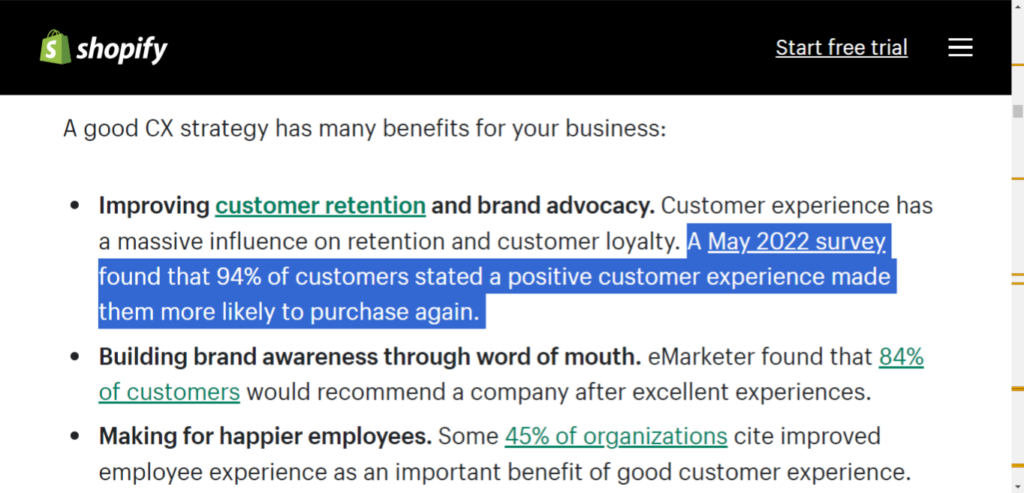
It’s no secret you’re monitoring shoppers’ behavior on your website.
Improving the customer experience will ultimately help you get more conversions.
We’ll show you the best ways to accomplish this.
Start by focusing on your primary target market
We’ll eventually increase customer personalization much further than this, but you have to start with the basics.
Your website should be designed to please your best customers.
Here’s an example to illustrate our point.
Let’s say you’re:
- A small clothing company with a brick-and-mortar store located in Rhode Island.
- You have a global ecommerce store, but —
- 90% of your online traffic and sales come from people located in New England.
- Every once in a while, you’ll get a hit from Australia, southern California, or Hawaii.
That doesn’t mean you should promote bathing suites heavily on your website during the winter.
This product doesn’t speak to your primary customers.
You should be pushing sweaters, winter coats, and boots instead.
Some companies have a target market specific to one gender.
Take a look at Victoria’s Secret website:
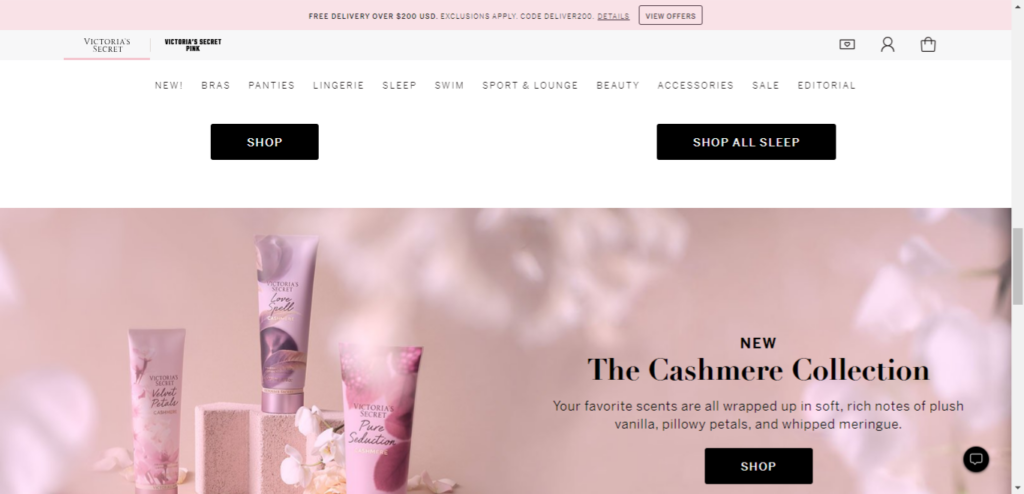
All their products are for women.
That’s why their site has a pink theme and features strictly women’s apparel and accessories on the homepage.
This website wouldn’t be effective for a company that sells products for both men and women.
Once you start by designing your website with your most profitable customers and target market in mind, the rest of your personalization methods will become much easier.
Encourage visitors to create a customer profile
You want all your customers to shop while logged into their customer accounts.
That way, you can monitor all their shopping habits and find out what products they like the most.
You can also include a zip code field when designing profile fields for them to fill out.
This can help you determine the best products to offer your customers based on their location and the time of year.
Not every ecommerce site has a high concentration of sales from a specific region.
Global ecommerce stores have to be able to customize the products on their sites based on the season of the region where the user is located.
Another thing to consider is your holiday season promotional campaigns.
Running a Fourth of July sale may speak to the American customer, but it doesn’t mean anything to international consumers.
Those advertisements shouldn’t be shown to visitors from Spain or Germany.
But you must give the customer a reason to create a customer profile.
Saying: Join now for a more personalized shopping experience –This isn’t the most enticing pitch.
Take a look at what Champs Sports offers their VIP members who create a profile:
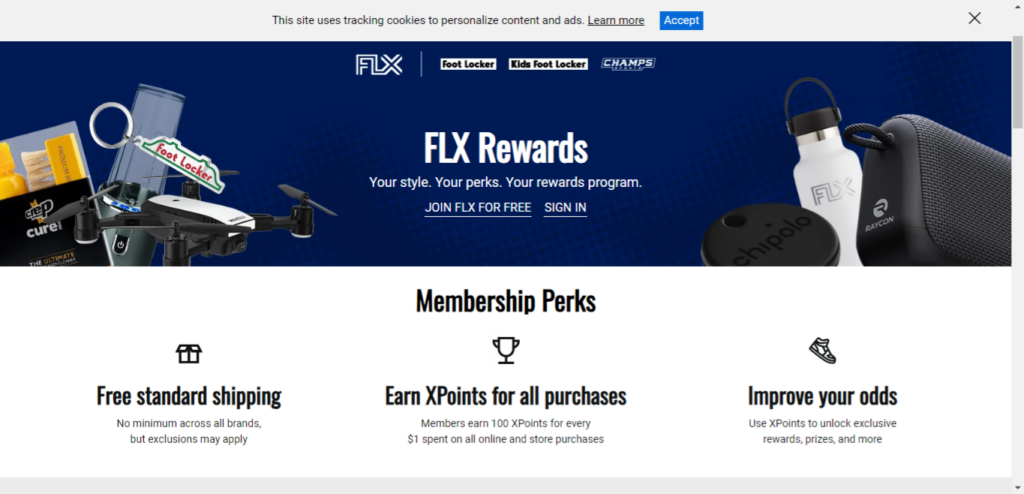
All these exclusive benefits give the shopper a reason to create a profile.
They stack value on value on value.
And, crucially, they make the page easy to read with intuitive navigation.
The personalization they’ll receive is just an added bonus, but it will make it easier for you to get conversions.
Get customers to add more items to their shopping carts
Another way to personalize the customer shopping experience is to use information about your customers’ orders.
Someone has been browsing your site for a while.
They’ve considered a few different products but ultimately picked their favorite.
This person may have had a couple of other options in mind, but they just decided to add one to their cart for one reason or another.
Here’s a perfect opportunity for you to upsell to this customer.
This will help you get a higher average order value as well.
Let’s take a look at an example from SAXX Underwear:
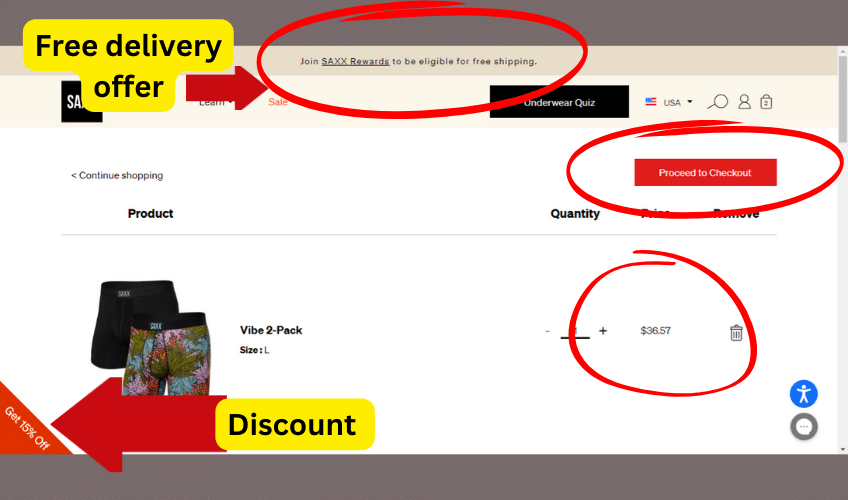
They offer free shipping on orders over $50.
A customer spending $44.95 is likely to feel they should add something else to their cart to get the free shipping benefit.
Plus, as we said before, the customer probably has something in mind they wanted to add in the first place.
These subtle tricks can get people to spend more on each visit.
Use popups sequences for new customers
If someone isn’t signed into their user profile, it might be because they don’t have one.
Maybe it’s their first time visiting your website.
You can’t expect everyone to know your brand and website navigation.
To improve the learning curve and incentivise your customer to make a purchase, utilise pop-ups and display benefits.
Here’s a great example from Julep. They use an interesting pop-up sequence for new customers — we’ll discuss the discount underneath the examples:
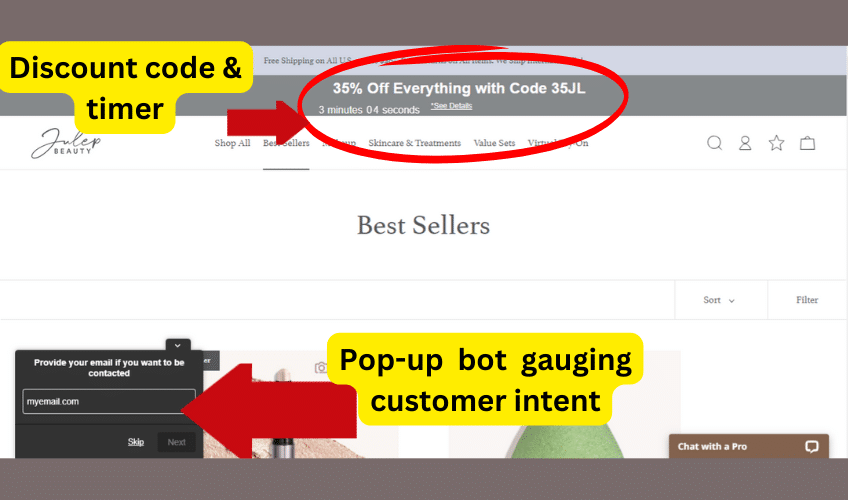
In the above example, Julep doesn’t hang around. There’s a pop-up (non-intrusive) that asks if there’s anything preventing us from making a purchase.
This engages us and also presents a targeting opportunity by measuring buyer intent.
We enter a non-commital response, and they then ask for our email address:
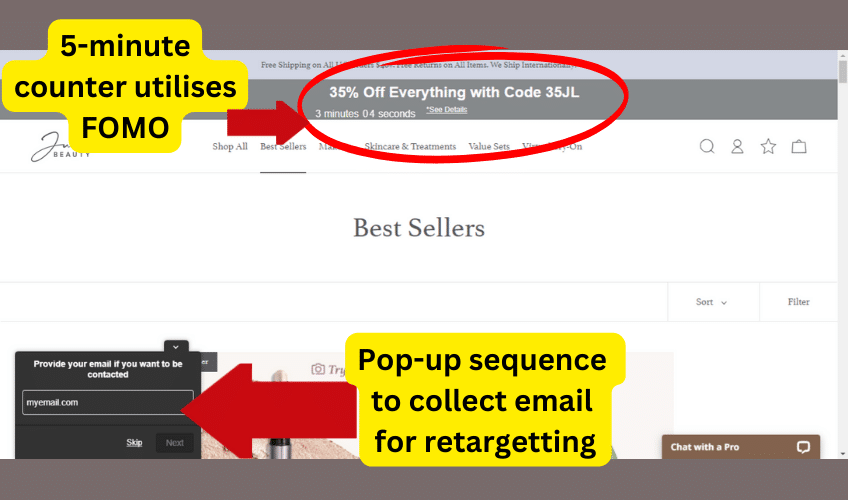
Notice the five-minute timer? It’s a genius layout because it’s above the fold, making it hard to miss.
And five minutes adds a layer of scarcity to tickle the FOMO that even the most thick-skinned person will struggle to ignore.
This method will give that extra encouragement for your site visitor to complete the conversion.
Even if they don’t make a purchase today, you’ve got their email address added to your subscriber list.
Now you can contact them via email and use additional personalization methods through that marketing channel, which we’ll discuss shortly.
Popups have an average conversion rate of 3.8%.
While that number may sound small, think about your daily website traffic.
For every 10,000 visitors you get, you’ll get 380 more conversions than you would have without the popups.
And that’s if you have average rates.
We’ve seen some companies with significantly higher conversion rates.
Multiply those additional conversions by your average order rate to determine how much more revenue you could get.
Plus, it’s not like it will cost you anything extra to implement this strategy.
So it’s well worth it.
Reward customer loyalty
You want to make sure your best customers feel special.
If they are spending lots of money, you should reward them for this.
Loyalty reward initiation works in three ways:
- Reward new customers with a discount.
- Highlight the benefits of signing up for continued discounts.
- Remind returning customers to sign up for the rewards program.
Take a look at this rewards program offered by Footlocker:
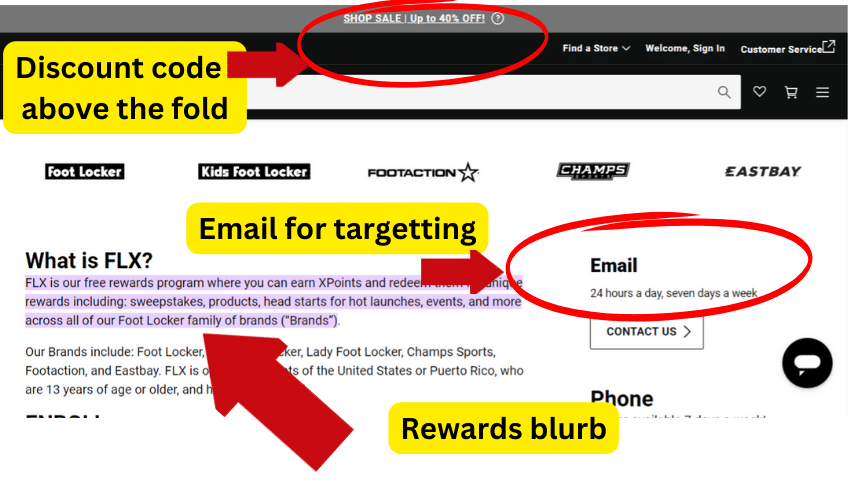
The above screenshot is the top section — Footlocker goes into significant details about its programs and partners.
It’s no surprise that Sports Champs is part of this group — a very similar high-level of marketing nuance is happening right here.
Oh — Did you notice the email form? Footlocker hits a home run with the bases loaded with this rewards page.
Rewarding people for spending money will encourage them to spend more, all by stacking rewards and leading with benefits.
Recommend products to website visitors based on their browsing behavior
When someone is browsing your website, you need to figure out what they’re looking for.
This is essential for ecommerce companies that have a wide range of products.
According to Barilliance, 31% of the money generated by ecommerce sites was based on product recommendations.
Earlier, we saw that most customers prefer to shop at retailers offering personalized shopping experiences, and this data reinforces that even more.
So you need to narrow down the products offered on your site by category.
We’ll use clothing as an example.
- Tops
- Bottoms
- Shoes
- Accessories
Those would be reasonable categories to segment your products by.
The type of content viewed is the top method that websites use to personalize the user experience.

Amazon uses this technique on their website all the time:
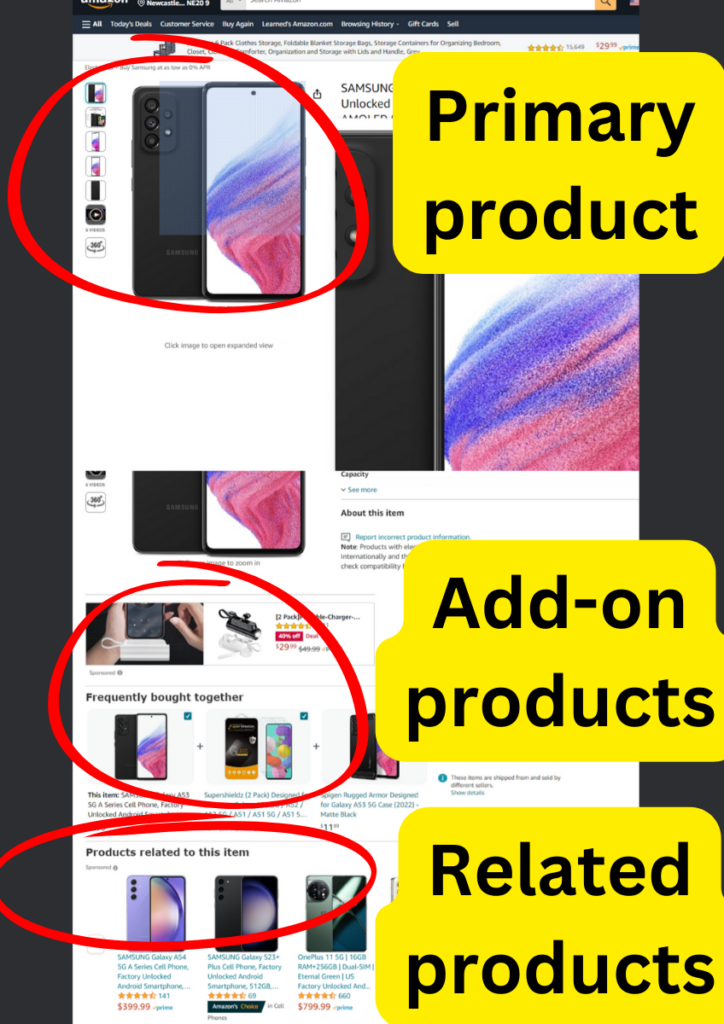
In the above example, the user browses for a mobile phone. Amazon provides all its features and customer reviews.
Next, they make two suggestions:
- Buy related products simultaneously.
- Suggest related products.
The related products match the model specs and price data.
It’s a case of providing multiple opportunities to convert a sale. This model isn’t for you? We’ll make it simple to find similar ones.
Continue using personalization on other channels
Some of the tactics we discussed involved collecting user information.
There’s a good chance you can get some email addresses added to your subscriber list based on these personalization techniques.
Well, now’s your chance to continue to market to these customers with personalization through other marketing campaigns—outside your website.
You can apply these same strategies to your email marketing campaigns.
Amanda Paterson notes that personalization improves their email marketing content.
Don’t limit yourself to only personalizing your website.
When you’re sending an email, use the recipient’s first name in the message to get their attention.
Use relevant content and promotional offers based on their shopping habits, demographics, and physical location to get higher conversions.
Conclusion
If you’re trying to improve the conversion rates on your website, focus on enhancing the customer experience.
One of the best ways to do this is by implementing personalization tactics.
Start by focusing your efforts on your primary target market.
Then, encourage your customers to create a unique user profile.
The information they provide you with when creating the profile will give you additional insight into their shopping habits.
But you need to give them a reason to join, so make sure to offer some promotional discount or another incentive.
Try to get your customers to add more to their shopping carts by enticing them with something relevant to their current order.
Recommend other products based on what they are browsing for.
Create a customer loyalty program, and monitor how much money each customer spends. Reward the customers who spend the most.
All of these personalization techniques will help you increase your conversion rates, but that doesn’t mean you should limit this to your website alone.
Use personalization methods in other marketing channels, such as your email campaigns.
